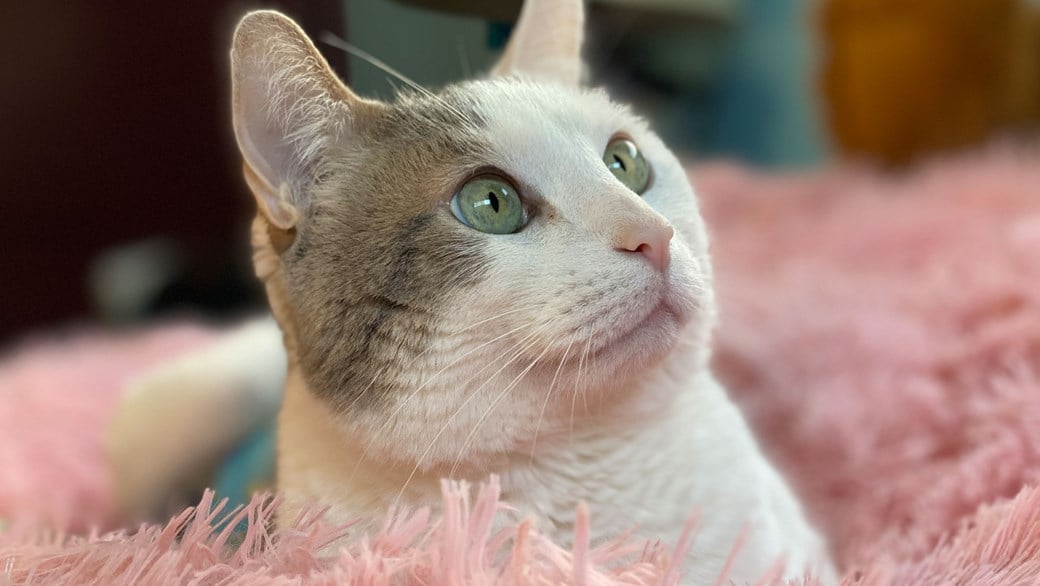
Cats in season
Female cats will experience their first heat cycle when they reach puberty if they have not yet been spayed.
Unneutered female cats usually come into their first heat between 4 and 12 months of age. This is the fertile period of a cat's cycle when they can get pregnant. After that, her season will typically be due to repeat every year from spring to autumn.
Signs and behaviours that suggest your cat may be in heat
- Display of affection: You may notice your cat becoming more affectionate than usual. It's not uncommon for her to rub on furniture, toys, other cats, and maybe even on you.
- Excessive grooming: She may spend a great deal of time licking her genital area, even though there is no blood present.
- Mating call and position: Your cat may vocalise loudly. If she doesn't mate during this time, the "calling" can last for several days. After that, she may assume the mating position; head down, forelegs bent, rear quarters raised, tail raised and head sideways. She might tread rhythmically with her rear legs.
- Marking her territory: During heat, a cat may spray urine onto vertical surfaces. This is normal behaviour for a cat in heat, so don't panic.
- Loss of appetite: You may notice your cat has less of an appetite than usual. This is because her instinct is to focus on reproducing, rather than feeding herself. If the cat is not eating at all, then she will require veterinary attention. The lesser appetite should last no longer than 2 weeks, so keep a close eye on it. Contact your local vet if she doesn't return to her normal eating pattern after that time.
- Desire to escape: If your cat has the instinct to attract a mate, she may be drawn to the outdoors. It's not uncommon for an indoor cat to run away for an unpredictable amount of time.
- Top tip! Make sure your kitten has been microchipped and that all of the details are up to date.
How to help your cat in heat
Going into heat can be an uncomfortable time for your cat. Cats don't have the same physical symptoms that human females do during their cycle, but that's not to say they don't experience some form of discomfort and changes in behaviour. To alleviate some of this discomfort, you may wish to try the following:
- Provide your cat with a covered heat pad to lay on
- Try giving some catnip to calm them down
- Play with your cat to help distract them from discomfort
- Give stress-relieving herbs or pheromones to help ease stress levels
If you have specific questions or concerns about your cat, please don't hesitate to contact your local Vets4Pets practice.
How long does a cat's heat cycle last?
Female cats go into heat every two to three weeks during mating season, which can last from spring to autumn - although, with changes in climate, many cats are now coming into season at any point of the year. Every heat cycle lasts an average of six days. Because of this quite rapid reproductive cycle, an unneutered cat can have as many as three to five litters per year.
Preventing pregnancy and keeping your cat safe
Cats are very effective breeders. Without neutering, the UK's cat population can quickly get out of control. If you're not planning to breed your cat, getting your cat neutered before they can breed is an essential part of responsible ownership. It's generally recommended that kittens are neutered at around four months of age or younger.
It's important to note that there is currently very little data to suggest any disadvantages to neutering a cat at a younger age (for example, from eight weeks onwards).
Thinking of neutering your cat?
Getting your cat neutered or spayed is a great way of preventing unwanted pregnancies whilst also making your cat less likely to wander far away from home.
